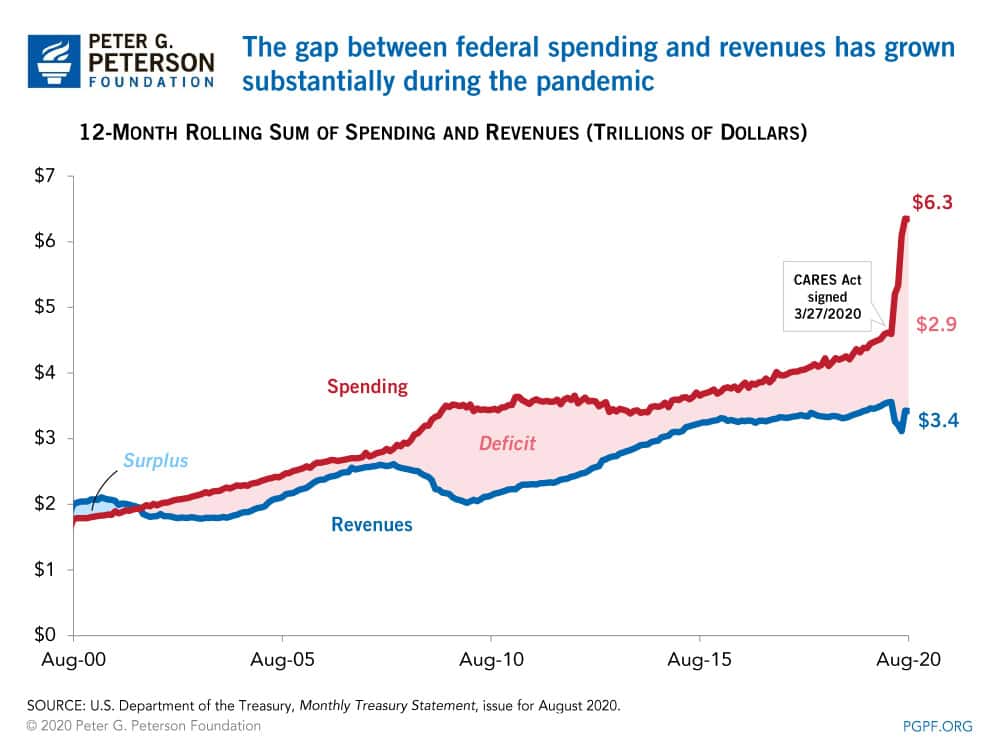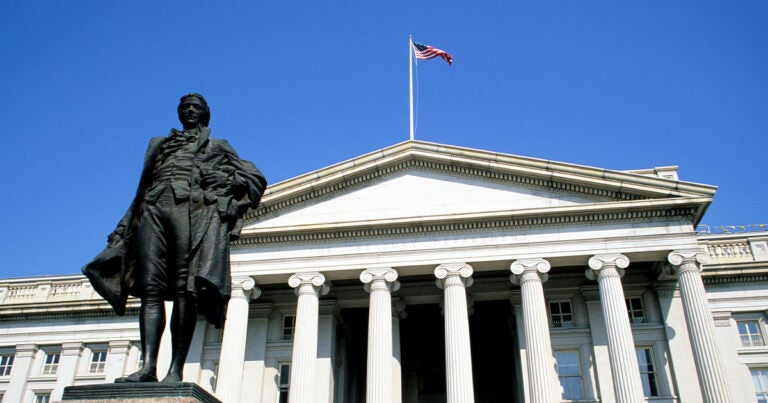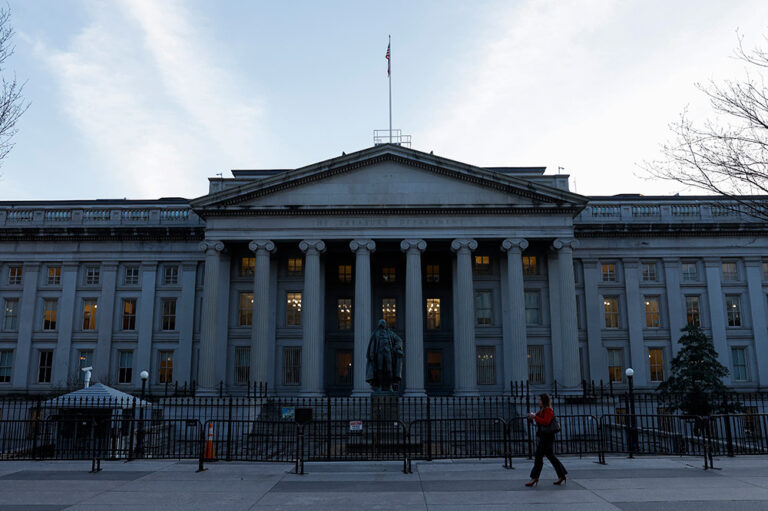The economic disruption caused by the coronavirus (COVID-19) pandemic and the federal government’s response to it has widened the gap between spending and revenues in the budget. The growth in spending has been driven by legislative actions, particularly provisions in the Coronavirus Aid, Relief, and Economic Security (CARES) Act such as Economic Impact Payments, the Paycheck Protection Program, and additional unemployment compensation.
Provisions in the CARES Act and the Families First Coronavirus Response Act also diminished revenues sharply by deferring some payroll taxes, creating tax credits for employers to retain workers and provide sick leave, and allowing greater use of losses to offset taxable income. The recent uptick in revenues mostly reflects activity that would have occurred earlier in the year if the Administration had not postponed the tax-filing deadline.

An Unsustainable Fiscal Future
The rapid increase in the gap between revenues and spending is not surprising given the devastating effects of the pandemic and the necessary fiscal response. However, the underlying structural gap is an issue that lawmakers will need to consider once the crisis has abated.
Learn more about the fiscal challenges that the U.S. was facing before the pandemic.
Image credit: Chip Somodevilla/Getty Images
Further Reading
The Fed Reduced the Short-Term Rate Again, but Interest Costs Remain High
High interest rates on U.S. Treasury securities increase the federal government’s borrowing costs.
What Types of Securities Does the Treasury Issue?
Let’s take a closer look at a few key characteristics of Treasury borrowing that can affect its budgetary cost.
Quarterly Treasury Refunding Statement: Borrowing Up Year Over Year
Key highlights from the most recent Quarterly Refunding include an increase in anticipated borrowing of $158 billion compared to the same period in the previous year.


